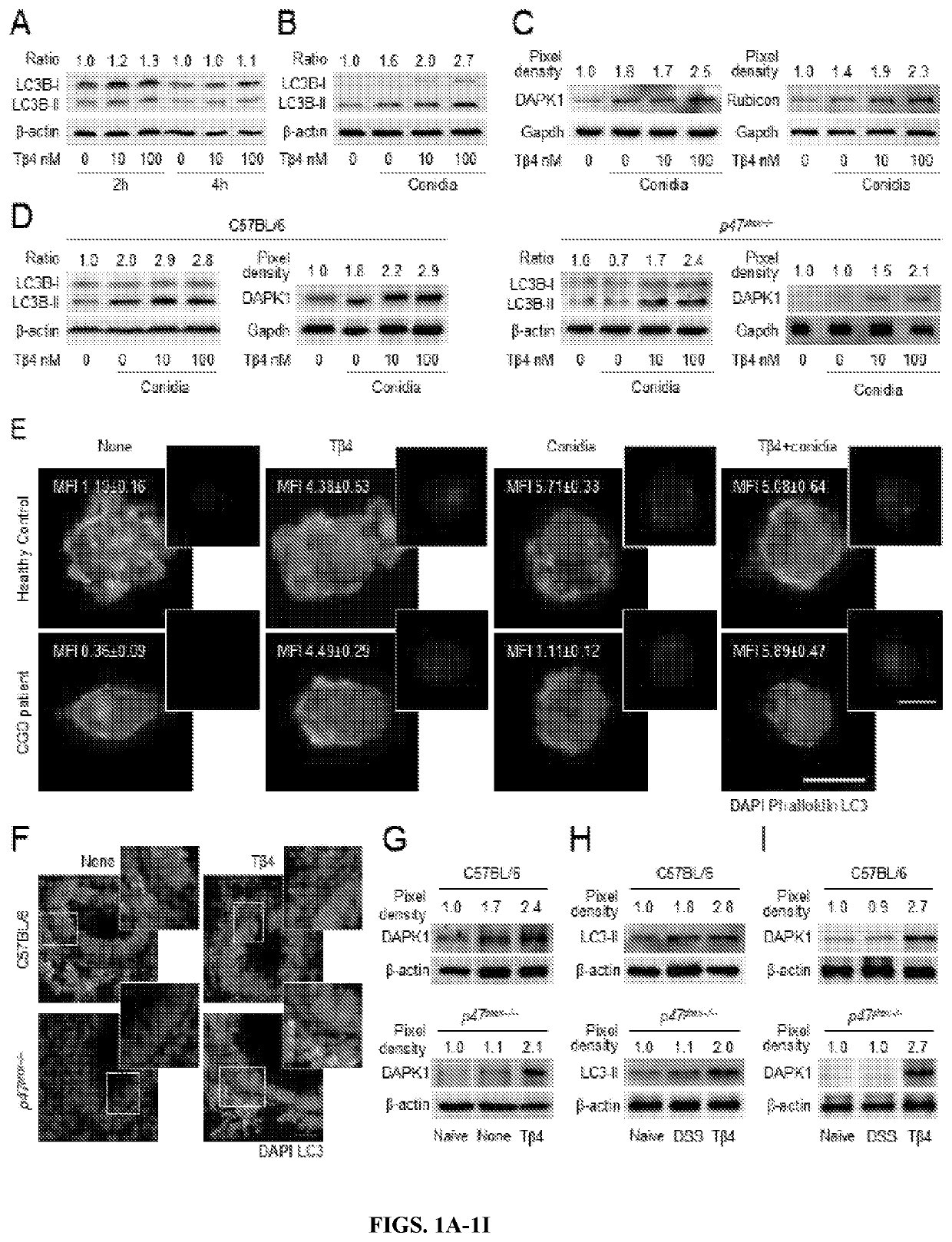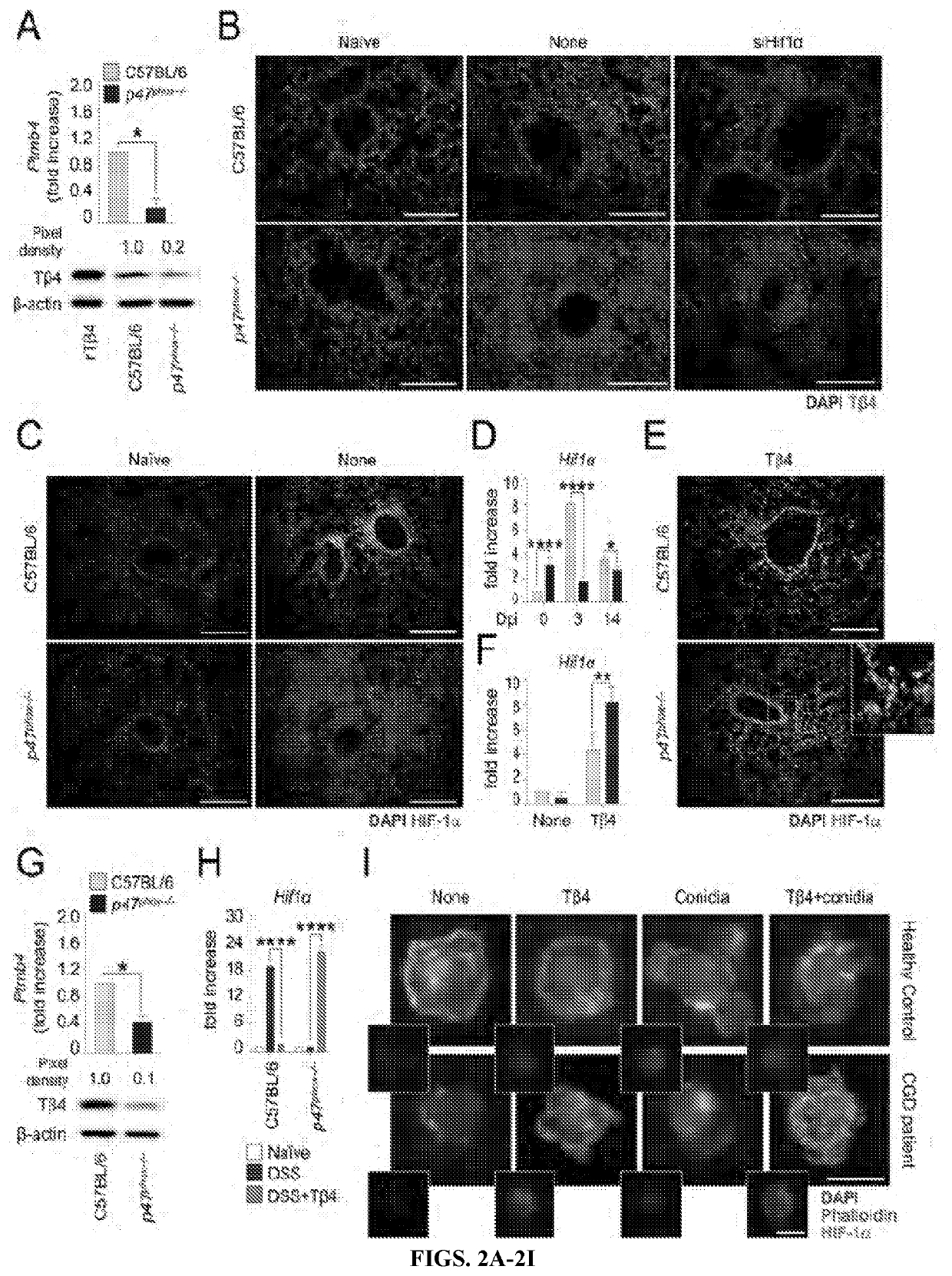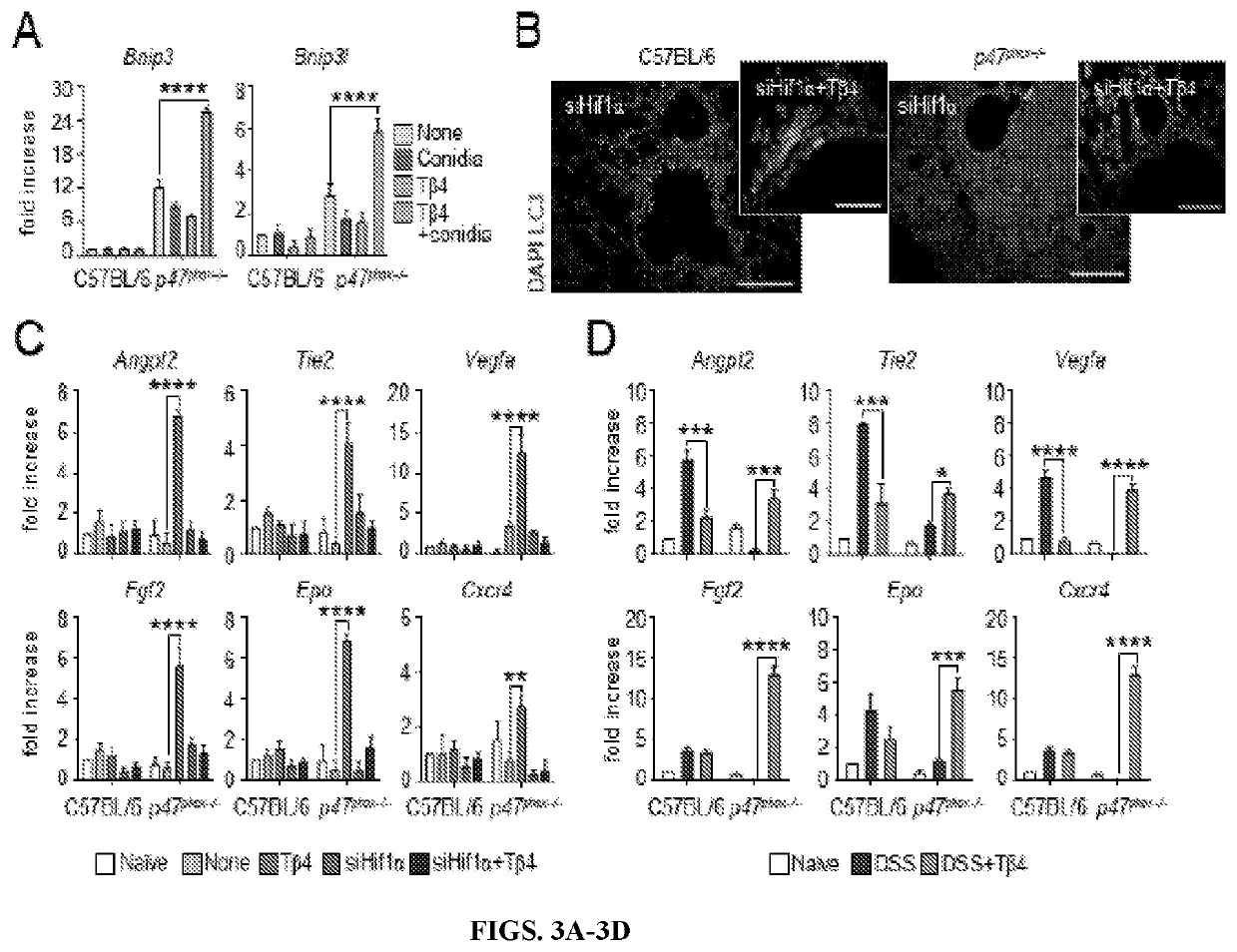Compositions and methods for treatment of chronic granulomatous disease
a technology of granulomatous disease and composition, applied in the direction of drug composition, peptide/protein ingredients, muscular disorders, etc., can solve the problems of increased susceptibility to infections, impaired microbial killing by phagocytic cells, and defective production of reactive oxygen species (ros)
- Summary
- Abstract
- Description
- Claims
- Application Information
AI Technical Summary
Benefits of technology
Problems solved by technology
Method used
Image
Examples
example 1
[0107]The ability of Tβ4 to promote autophagy was assessed by the determining the ratio of LC3-II to LC3-I, widely used to monitor autophagy (Oikonomou et al., 2016) on RAW 264.7 cells exposed to live Aspergillus conidia in the presence of different concentrations of Tβ4. Tβ4 did not induce autophagy in unpulsed cells (FIG. 1A), but dose-dependently increased the LC3-II to LC3-I ratio in cells pulsed with conidia. This effect was observed as early as 2 hours after the exposure to the fungus (FIG. 1B). This finding suggests that Tβ4 could be able to activate LAP. Accordingly, the experiment testing the effect of Tβ4 on DAPK1 and Rubicon proteins, shows the expression of DAPK1 and Rubicon proteins, known to be involved in LAP, were dose-dependently increased by Tβ4 (FIG. 1C). As a result, Tβ4 may promote non-canonical autophagy involving DAPK1 and Rubicon.
[0108]Next, macrophages were purified from lungs of C57BL / 6 and p47phox- / - mice and pulsed in vitro with A. fumigatus conidia in th...
example 2
[0110]The inventors of the present disclosure provide an unexpected method for treating CGD by administering an effective amount of Tβ4, e.g., by administering a sufficient amount to promote HIF-1α expression in a subject suffering from CGD. Given that the defective LAP in CGD is amenable to restoration by Tβ4, experiments were conducted to determine whether the production of Tβ4 is defective in CGD by assessing Tβ4 gene and protein expression in p47phox- / - mice. A lower expression was observed for Tβ4 in CGD mice as compared to C57BL / 6 mice, both in terms of gene and protein expression, in the lungs (FIG. 2A-2B) and colons (FIG. 2F).
[0111]Given the reciprocal regulation between Tβ4 and HIF-1α, an experiment was conducted to determine whether defective Tβ4 levels in CGD mice could be associated with altered HIF-1α expression. HIF-1α gene and protein expression was measured in a p47phox- / - CGD mouse model. HIF-1α protein levels were reduced in CGD mice (FIGS. 2C and 2D).
[0112]Next, a...
example 3
[0113]The inventors of the present disclosure found that Tβ4 promotes LAP and mucosal barrier protection in an HIF-1α dependent manner. Experiments were conducted to determine whether a causal link exists between HIF-1α stabilization and induction of autophagy by Tβ4. A gene expression experiment showed that Tβ4 induced the expression in vitro of Bnip3 and Bnip3l, which are known to be involved in hypoxia-induced autophagy (FIG. 3A). A further experiment was conducted to infect p47phox- / - mice with A. fumigatus intranasally. The mice were treated with Tβ4 in the presence or absence of a siRNA for HIF-1α. HIF-1α inhibition abrogated LC3-II expression in p47phox- / - mice by Tβ4 (FIG. 3B). This experiment shows that Tβ4 requires HIF-1α to induce LAP.
[0114]Next, experiments were conducted to determine whether Tβ4 is involved in mucosal protection. Specifically, an experiment was conducted to measure in vivo gene expression following Tβ4 treatment. Genes involved in angiogenic signaling (...
PUM
| Property | Measurement | Unit |
|---|---|---|
| concentration | aaaaa | aaaaa |
| concentration | aaaaa | aaaaa |
| concentration | aaaaa | aaaaa |
Abstract
Description
Claims
Application Information
 Login to view more
Login to view more - R&D Engineer
- R&D Manager
- IP Professional
- Industry Leading Data Capabilities
- Powerful AI technology
- Patent DNA Extraction
Browse by: Latest US Patents, China's latest patents, Technical Efficacy Thesaurus, Application Domain, Technology Topic.
© 2024 PatSnap. All rights reserved.Legal|Privacy policy|Modern Slavery Act Transparency Statement|Sitemap



